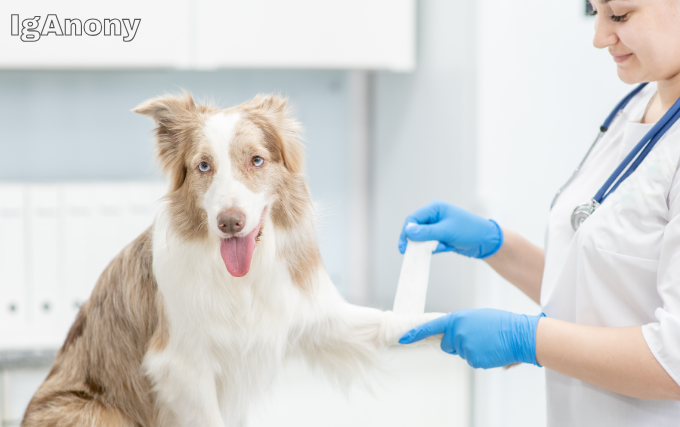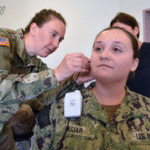As a pet owner, you know your furry friend’s well-being is a top priority. You have a trusted regular veterinarian for check-ups and vaccines, but what happens when an unexpected crisis strikes in the middle of the night, on a weekend, or during a holiday? This is when understanding the crucial difference between your regular vet and an emergency vet becomes essential.
While both are dedicated to animal health, their roles, resources, and operating hours are designed to handle very different situations. Knowing which one to call can save you critical time and, ultimately, your pet’s life.
The Regular Veterinarian: Your Pet’s Primary Care Physician
Think of your regular vet as your pet’s GP or family doctor. They are the foundation of your pet’s long-term health strategy.
Their primary focus is on:
- Preventative Care: Routine wellness exams, vaccinations, flea/tick/heartworm prevention, and annual bloodwork.
- Diagnosis and Management of Chronic Conditions: Managing ongoing issues like arthritis, diabetes, allergies, or thyroid problems.
- Minor Illnesses and Injuries: Treating ear infections, minor skin issues, small wounds, or upset stomachs.
- Routine Procedures: Spays, neuters, dental cleanings, and other scheduled surgeries.
- Client Education and Relationship Building: They know your pet’s history, personality, and baseline health, allowing for personalized care.
Regular vets typically operate during standard business hours, Monday through Friday, and often by appointment. This structured schedule allows them to provide consistent, planned care for their patients.
The Emergency Veterinarian: The Animal ER
Emergency vets are the critical care specialists of the veterinary world. Their clinics are essentially animal emergency rooms, equipped and staffed to handle severe, life-threatening situations that cannot wait.
Their primary focus is on:
- Stabilization and Triage: Their first goal is to stabilize a pet in critical condition—addressing difficulty breathing, severe trauma, uncontrolled bleeding, or toxin ingestion.
- 24/7/365 Availability: They are open nights, weekends, and all major holidays, precisely when your regular vet is closed.
- Advanced Critical Care: They have specialized equipment like blood transfusion capabilities, oxygen therapy, continuous ECG monitoring, and ultrasound for rapid diagnosis.
- Handling Severe Situations: They are trained for emergencies such as hit-by-car incidents, sudden collapse, difficulty breathing, bloat (GDV), seizures, and severe allergic reactions.
- 24-Hour Monitoring: For pets that need constant care, many emergency hospitals offer overnight monitoring and intensive care.
You typically don’t need an appointment for an emergency vet; you walk in, and patients are seen based on the severity of their condition (triage).
Key Differences at a Glance
| Feature | Regular Veterinarian | Emergency Veterinarian |
|---|---|---|
| Hours | Standard business hours (M-F, 8 AM-6 PM) | Evenings, weekends, holidays (24/7) |
| Care Type | Preventative, routine, chronic management | Critical, urgent, life-threatening |
| Appointments | Scheduled appointments | Walk-ins based on triage |
| Facility | Standard exam rooms, surgery suite | Advanced ICU, monitoring equipment |
| Relationship | Long-term, knows pet’s history | Short-term, focused on immediate crisis |
When to Go to the Emergency Vet vs. Your Regular Vet
This is the most important question. When in doubt, always call for advice. However, head directly to an emergency vet if your pet shows any of these signs:
- Difficulty breathing or choking
- Uncontrolled bleeding or bleeding from the nose/mouth/rectum
- Collapse, loss of consciousness, or seizures
- Signs of extreme pain (whining, trembling, refusing to be touched)
- Inability to urinate or defecate (especially straining)
- Suspected poisoning (antifreeze, rat poison, human medications, toxic foods)
- Severe vomiting or diarrhea (especially with blood)
- Distended, hard abdomen (a sign of bloat/GDV, which is fatal without immediate surgery)
- Major trauma (fall from height, hit by car)
- Eye injuries of any kind
For non-urgent issues like a limp, a rash, a routine vaccine, or a check-up, schedule an appointment with your regular vet.
How They Work Together
The best outcome for your pet often involves both teams working together. After an emergency vet stabilizes your pet, they will provide a detailed summary of the visit, including diagnoses, treatments, and lab results. It is crucial that you follow up with your regular veterinarian so they can continue linkhouse the care and monitoring, ensuring a seamless recovery.
For pet owners, having a plan is the best defense. Know the location and phone number of your nearest emergency clinic before you need it. Save it in your phone and keep it on the fridge.
For those in need of immediate, critical care, it’s reassuring to know that specialized services are available. Facilities like Veteris emergency care services are equipped with the expertise and technology to provide life-saving treatment when every second counts.
By understanding the distinct roles of your regular vet and emergency vet, you can ensure your pet gets the right care, at the right time, from the right professionals.







